From latency to lighting - how to perform as an electronic musician
Back To Live: Playing live requires courage, thoughtful preparation, and of course, some investment in the right (reliable) tech
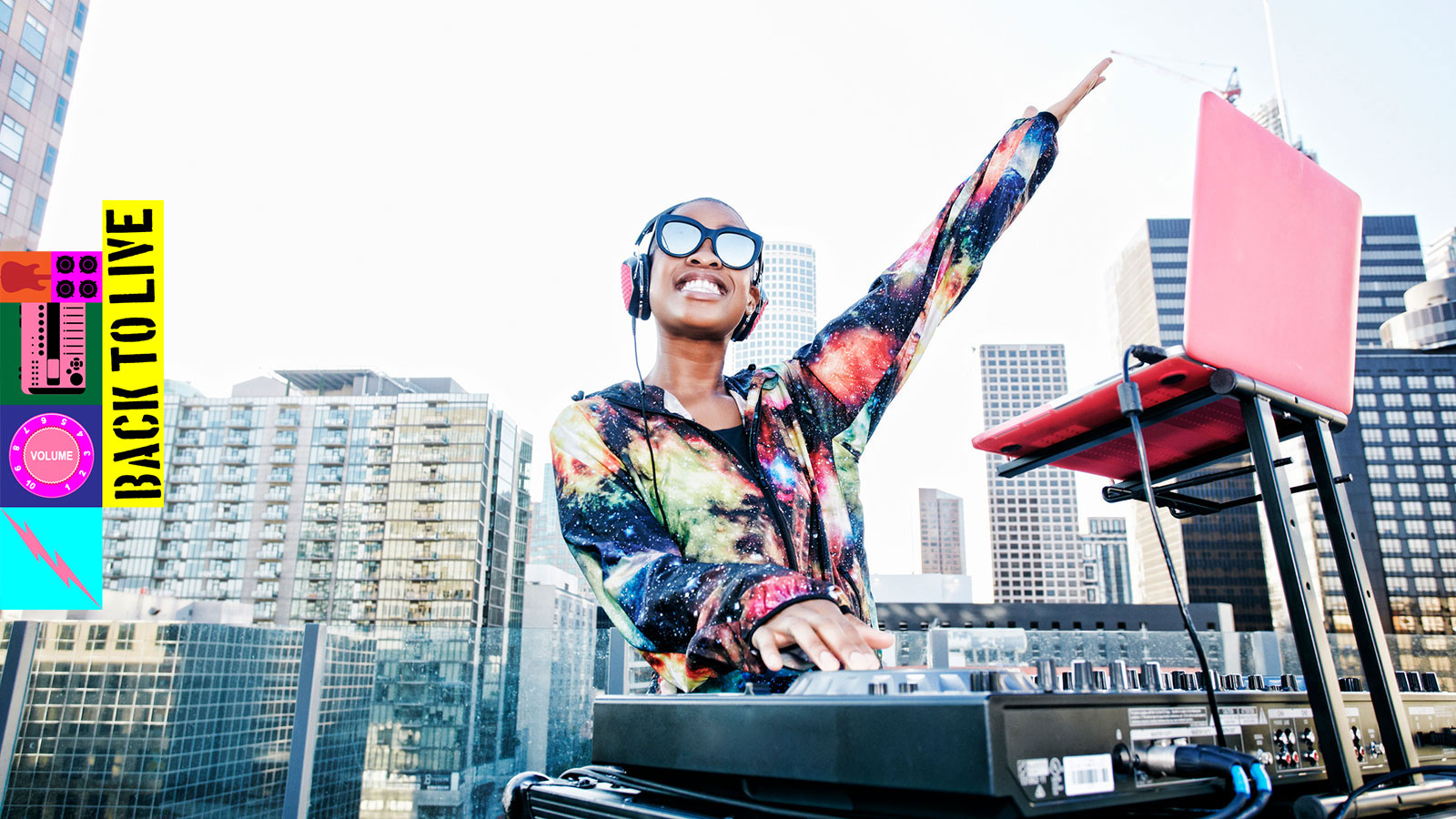
BACK TO LIVE: We’ve lost count of the number of artists who cite the live experience as the highlight of their careers.
Though the music-making process is profoundly rewarding, its magic pales when pitted against the euphoric highs of playing your tracks to a mass of enthusiastic and appreciative spectators.
However, with the last year-and-a-bit spent mainly locked behind closed doors, and venues heartbreakingly closing around the world, the magic of the gig-sphere has been tantalisingly out of reach.
As we see restrictions lift, it’s understandable that many artists are itching to get back out there, and even more budding performers are gearing up for their first ever shows.
The pandemic aside, making the leap from bedroom producer to attention-seizing live performer has long been a daunting venture. But it needn’t be.
In this feature we’ll guide you through the major considerations you need to make, without overly prescribing ‘what’ to do. Our aim is to help you to make the right calls and avoid any potential mishaps, feel confident and get the best from live life.
Live and let live
OK, so let’s start by boiling things down to four fundamental factors. We can broadly sort our live concerns under the following overall quarters - the gear, the performance, the gigs and the audience. Let’s begin with the first.
Get the MusicRadar Newsletter
Want all the hottest music and gear news, reviews, deals, features and more, direct to your inbox? Sign up here.
If you’re making your first foray into the live world, it’s best to not over-complicate your rig initially
For the lion’s share of modern electronic musicians, live performance will orbit a central computer, typically running a live-tailored DAW such as Ableton Live, FL Studio or Studio One, though compact synth and sequencer setups are also fairly common.
If you’re making your first foray into the live world (or returning to it after a considerable absence), it’s best to not over-complicate your rig initially, and prioritise comfort with how everything works, where your shortcuts are, and make sure you’re very familiar with the ebb and flow of your set.
For many, having the convenience of a timeline-type digital environment keeps things logically ordered, so you’re never caught with your proverbial trousers down.
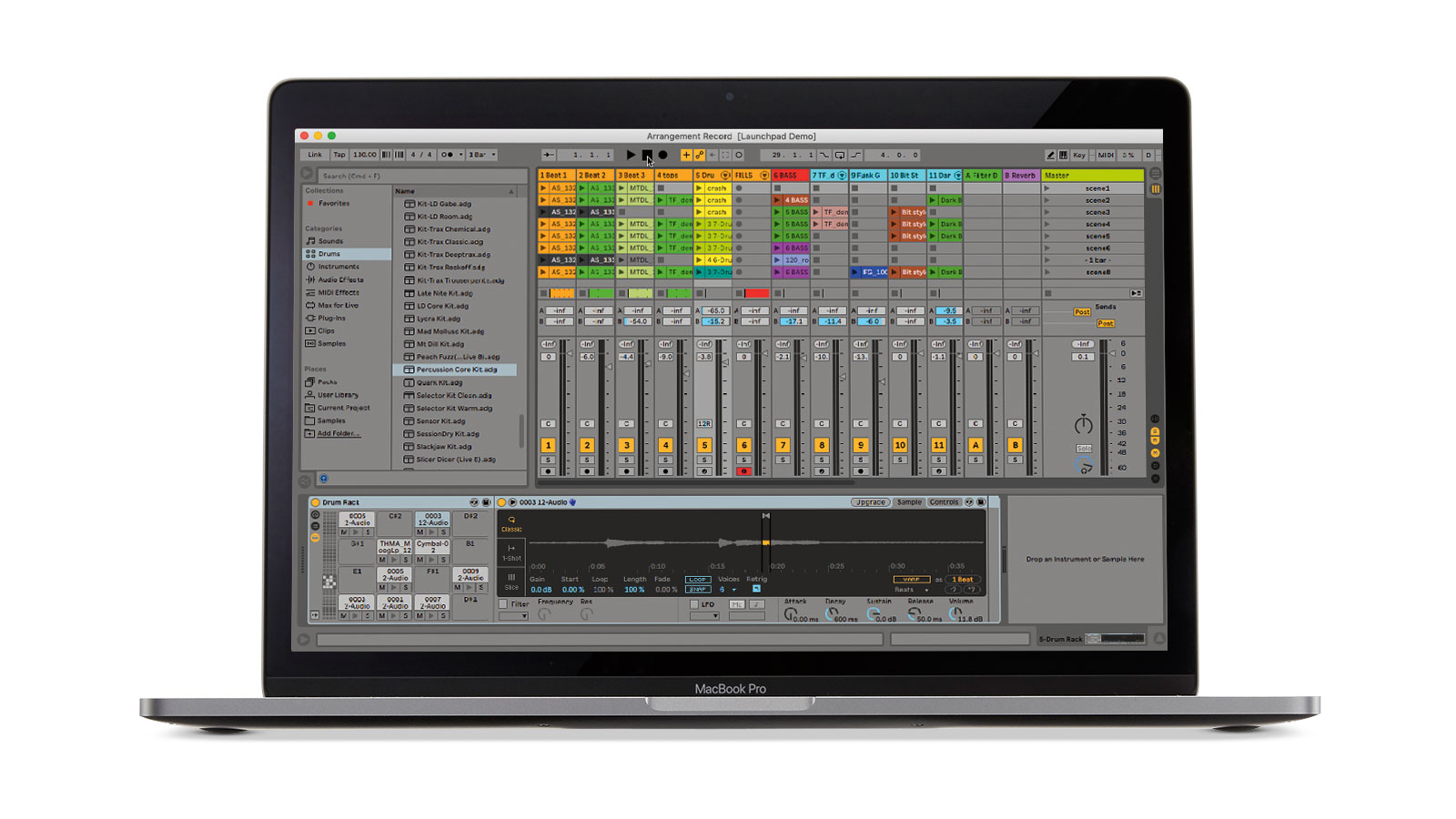
Ableton Live is the grandaddy of performance workstations, its hugely intuitive Session View allows you to break down your dense arrangements into single trigger-able elements (or even banks of tracks) which can be activated at will.
MIDI controllers come in many flavours, though the most common for Live setups are usually grid-based surfaces
It also sports slick performance-enhancing effect-automation and crowd-pleasing transition effects. It’s an electronic music mainstay, designed to not just serve as a flexible DAW for music-creation behind closed doors, but the all-in-one hub of all your live sets.
With Live you’re able to keep everything tempo-aligned, perform to a backing track or incorporate as much improvisation and musical performance as you wish.
Live is popular, but it’s certainly not the only option, with the aforementioned FL Studio, Studio One, Reason and even GarageBand now being similarly optimised for the live domain.
Relying on a computer in a live environment can be off-putting to some, and so a decent MIDI controller is paramount for both the triggering, and performing of your tracks.
MIDI controllers come in many flavours, though the most common for Live setups are usually grid-based surfaces, best illustrated by Novation’s Launchpad, replete with big, colourful pads with which to zone into your clip triggering in a more expressive way, while also sporting parameter-scaling control knobs to modify factors like volume or modulation.
Ableton’s bespoke Push control surface is similarly pad-based, and is specifically aligned to control its sister software. Keyboard-based controllers, like the ones used in a home studio context, can also be put to use on stage.
The show must go on
So having a fluid home for your set-elements, and a MIDI controller to navigate it is (generally speaking) the simple foundation. However, spontaneity and sonic flair are essential to an exciting live performance.
For your main microphone, you’re going to want to prioritise durability
Aside from the mountains of software effects, synths and instruments operable within your DAW itself, bolstering your rig with additional items can also help. Hardware synths, effects units (eg physical effects units, such as pedals) or live instruments (such as a guitar) can add more character, and create more engaging performance moments. It’s entirely down to personal choice - and practicality.
Many will choose to align any external instruments to the BPM of your track, though if you’re intending on using a larger assortment of gear, it’s advisable that - down the line - you plump for an external time-setting device, such as the E-RM Multiclock, which will solve many timing-related headaches.
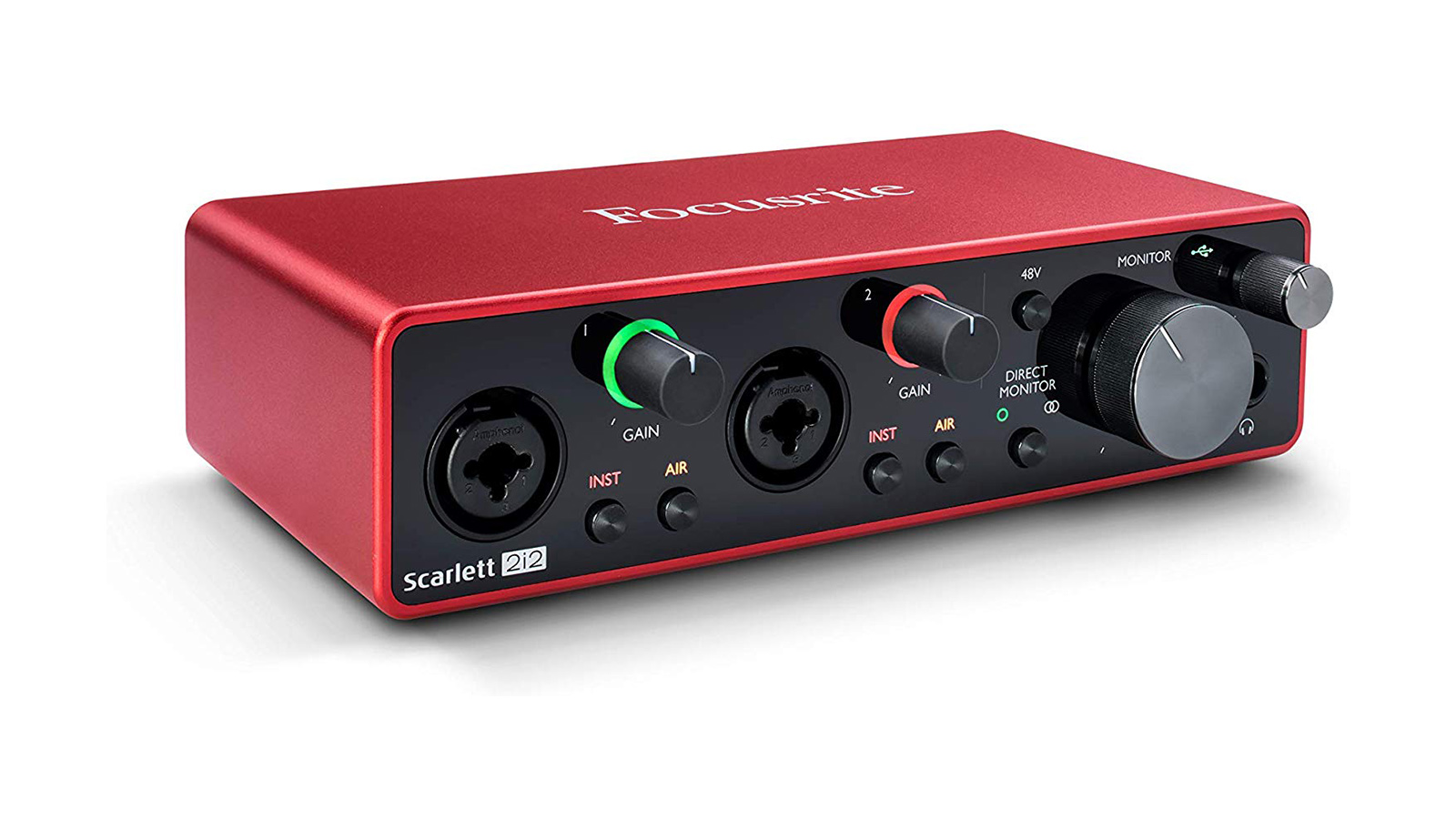
Hear me now
Beyond your music-making kit itself, it’s also vital to consider the impact of the all-important gear that channels and amplifies your sound to the audience’s ears.
Being happy with both your gear setup and the sound of your set beforehand is pivotal to putting on a good show
Firstly you’ll of course need an audio interface – and we’re not necessarily talking about the same one you use in your home studio. You’ll need one that is the lowest latency possible and is able to accommodate your central computer, as well as any additional instruments. If you plan to bring out a larger rig, a bigger live mixer may be required, though the venue will likely handle that in house.
Microphones are, quite naturally, vital for vocals, but they tend to be less important to electronic musicians than they are for live rock/jazz bands (who may require multiple amp and kit mics).
For your main microphone, you’re going to want to prioritise durability and ideally a flat response, so any software vocal treatment you may wish to apply isn’t already pre-coloured. You’ll also ideally want to shop for a dynamic mic over a cardioid, which will better weather the variations in vocal intensity thrown its way.
Eyes front
So for computer musicians, your live tech bedrock should be: a performance-tailored DAW, a MIDI controller keyboard/launchpad, a low latency audio interface and durable dynamic microphone. This is the typical setup that’s recommended as a comfortable hub, though, of course, we heartily encourage you to expand your rig with stereo effects, additional synths and more as you grow in live confidence.
Software such as Resolume and VDMX provide a simple, tactile way to trigger video that interacts with your set rhythmically
Being happy with both your gear setup and the sound of your set beforehand is pivotal to putting on a good show. You’ll be less paranoid of pitfalls, and able to focus firmly on audience satisfaction.
You want to feel stable enough that, during your shows, you can connect with the vibe of the room - making mental notes on which tracks your audience respond well to, and what elements of your set elicit the most positivity. Not to mention, enjoying the experience yourself.
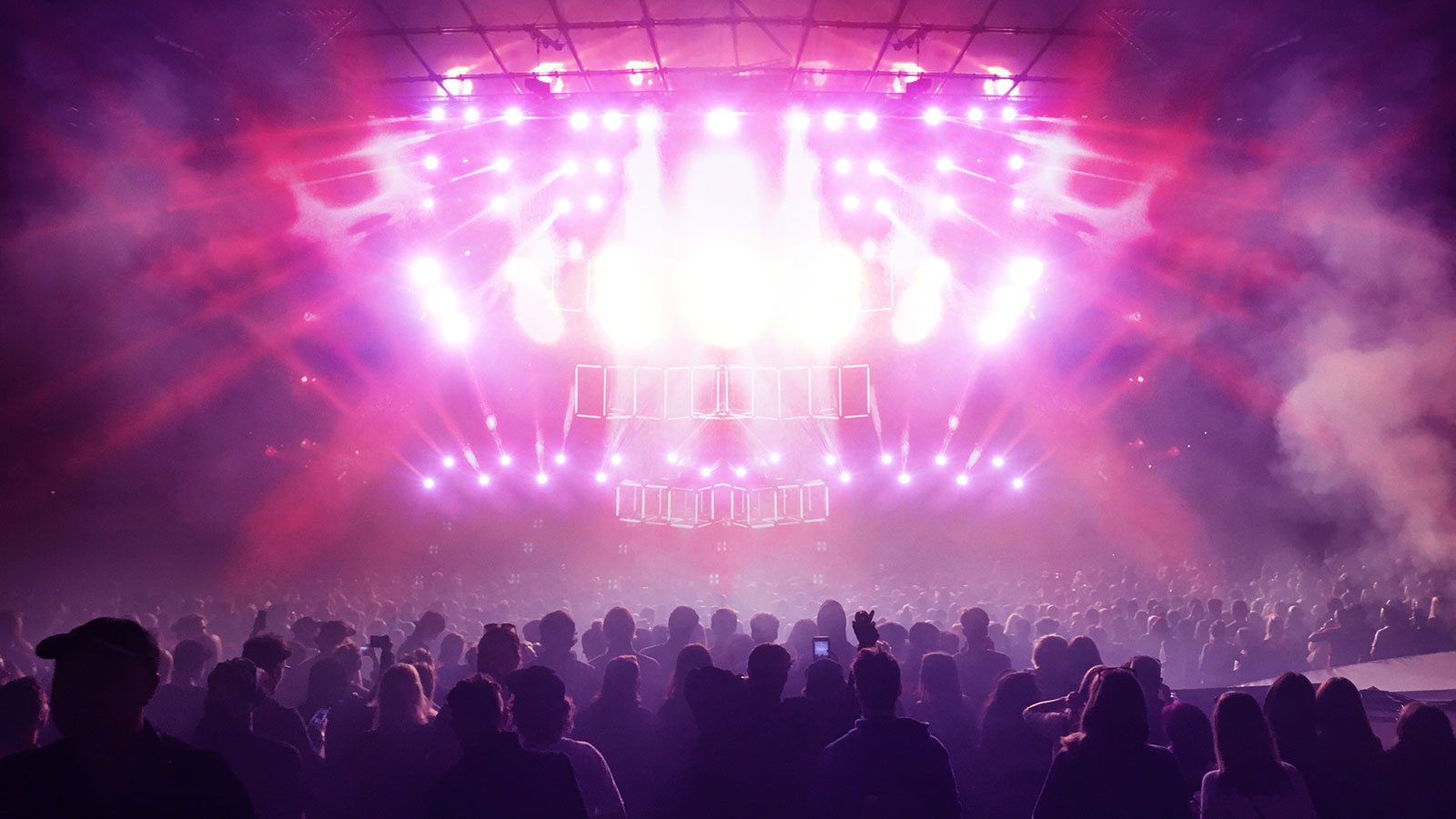
Visual appeal
Many artists of a certain stature have accompanying visuals for their performance, while VJs such as the peerless DJ Yoda, merge perfectly synced video footage with their tracks for mesmerising multi-sensory experiences. In-ear monitors are useful, routing the same audio feed that you’re sending out from your mixer to your ears
In-ear monitors are useful, routing the same audio feed that you’re sending out from your mixer to your ears
Though adding video might cause additional headaches, it can be an easy-ish route to elevate your set from person-in-room-playing-music to an unforgettable night.
Beyond just flatly displaying a video, software such as Resolume and VDMX provide a simple, tactile way to trigger video that interacts with your set rhythmically and intelligently, and allow you to manually perform the visuals as part of your show.
Beyond the area of video, a more regularly overlooked aspect of a live show is the lighting. Venues will usually be equipped with their own stage lighting; largely this will consist of a front wash of lights poised on the performer(s).
Backlighting can work in tandem with this to create more distinct stage feels for different songs, while controllable effect lighting such as strobes, blinders and haze can accentuate the energy of your tracks. Of course you’ll need to speak to the venue in advance if you want to incorporate your own lighting, and you may need another person to control it. But it’s certainly worth considering.
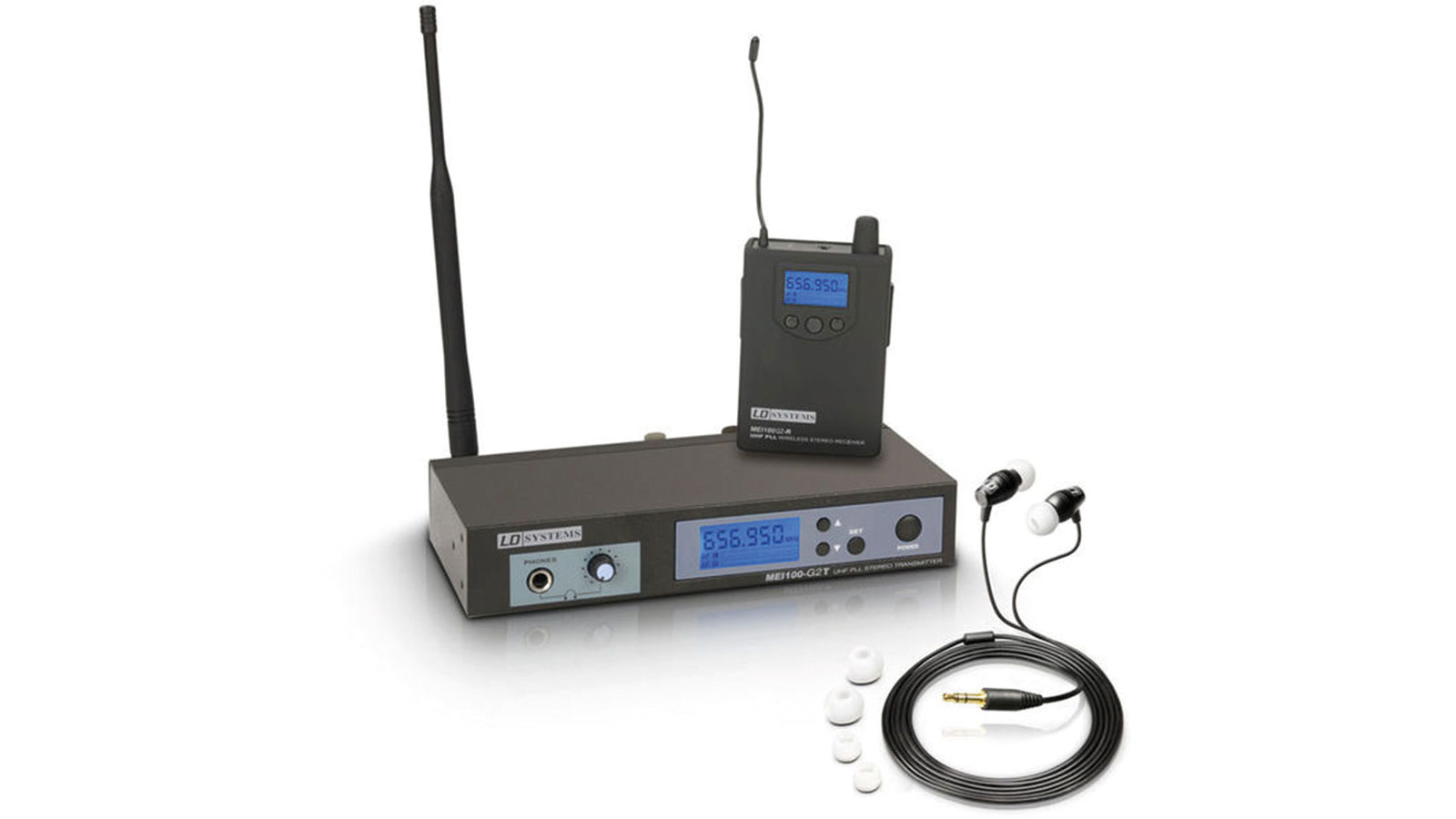
All ears
Typically, most venues will have a room-fitted PA system in place, with your audio inputs being blasted out of the numerous speakers around the venue. Your audio is typically routed through and mixed on a mixing console by an in-house sound engineer. More established artists bring in their own Front of House engineers, who know their artist’s sounds intimately, and how best to adjust for a venue’s acoustics.
The most immediate concern is ensuring you’re monitoring your sound accurately onstage. In-ear monitors are useful, routing the same audio feed that you’re sending out from your mixer to your ears so you can clearly hear your sonics, as opposed to often overly loud on-stage monitors.
The only downside is that you’ll miss out on crowd reaction noise, so it’s sometimes better to pop one out when less detailed listening is needed. The benefits of in-ear monitoring are myriad - there’s greater accuracy that can enable quicker live decision making, they diminish the potentially harmful volume levels of a live show and, with wireless systems, let you move around the stage unfettered by wires.
Computer Music magazine is the world’s best selling publication dedicated solely to making great music with your Mac or PC computer. Each issue it brings its lucky readers the best in cutting-edge tutorials, need-to-know, expert software reviews and even all the tools you actually need to make great music today, courtesy of our legendary CM Plugin Suite.
“These tariff actions will have a long-term effect on musicians worldwide”: The CEO of NAMM urges Trump to dump tariffs on components of musical instruments
“An incredible experience that went beyond just teaching music”: The UK’s biggest free music making weekend is extended to four days










